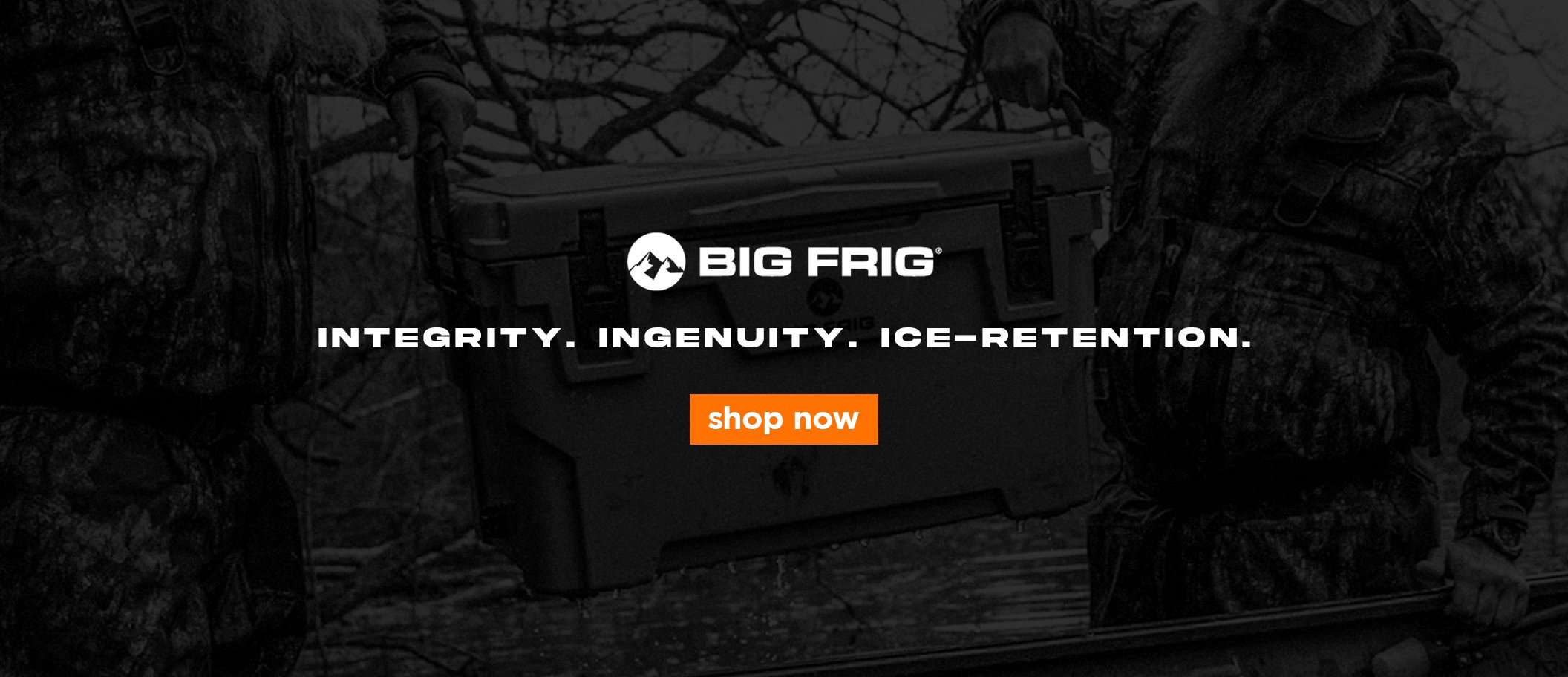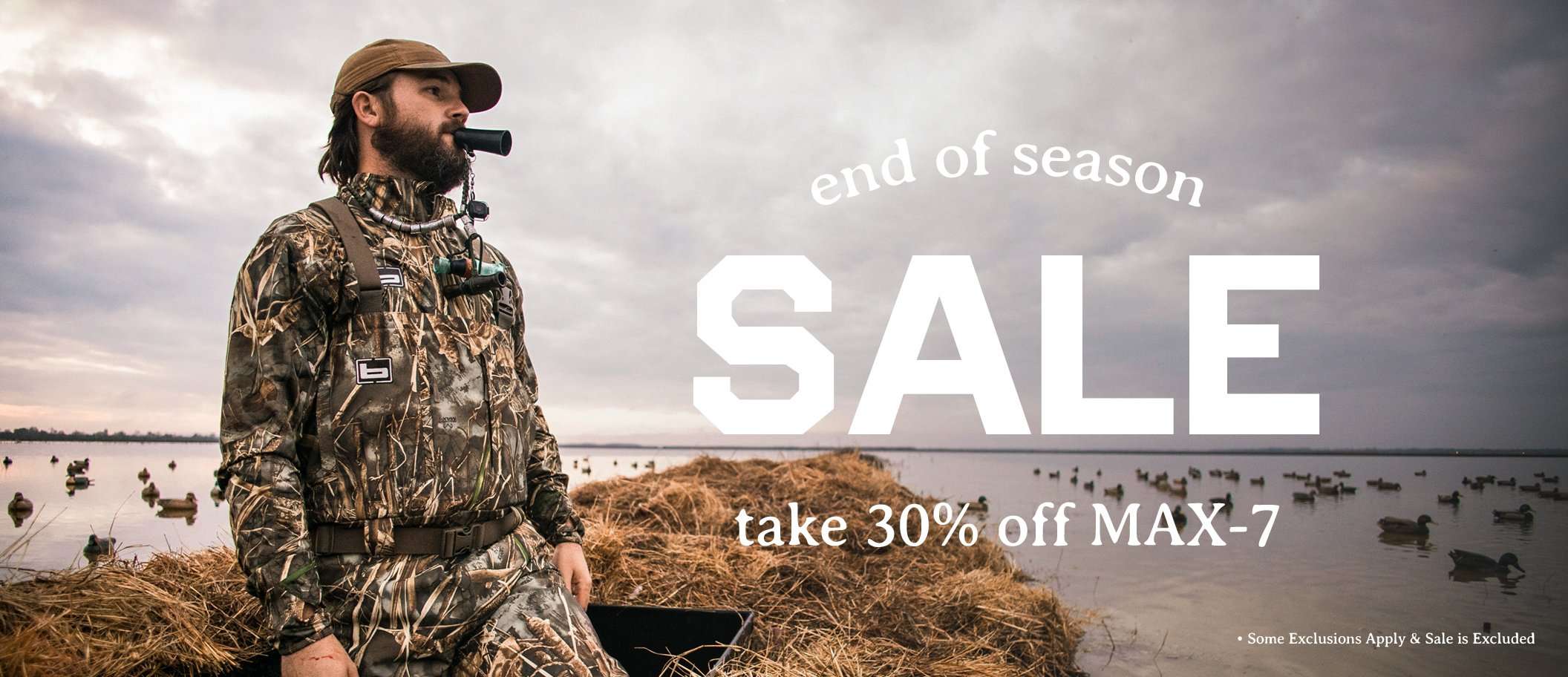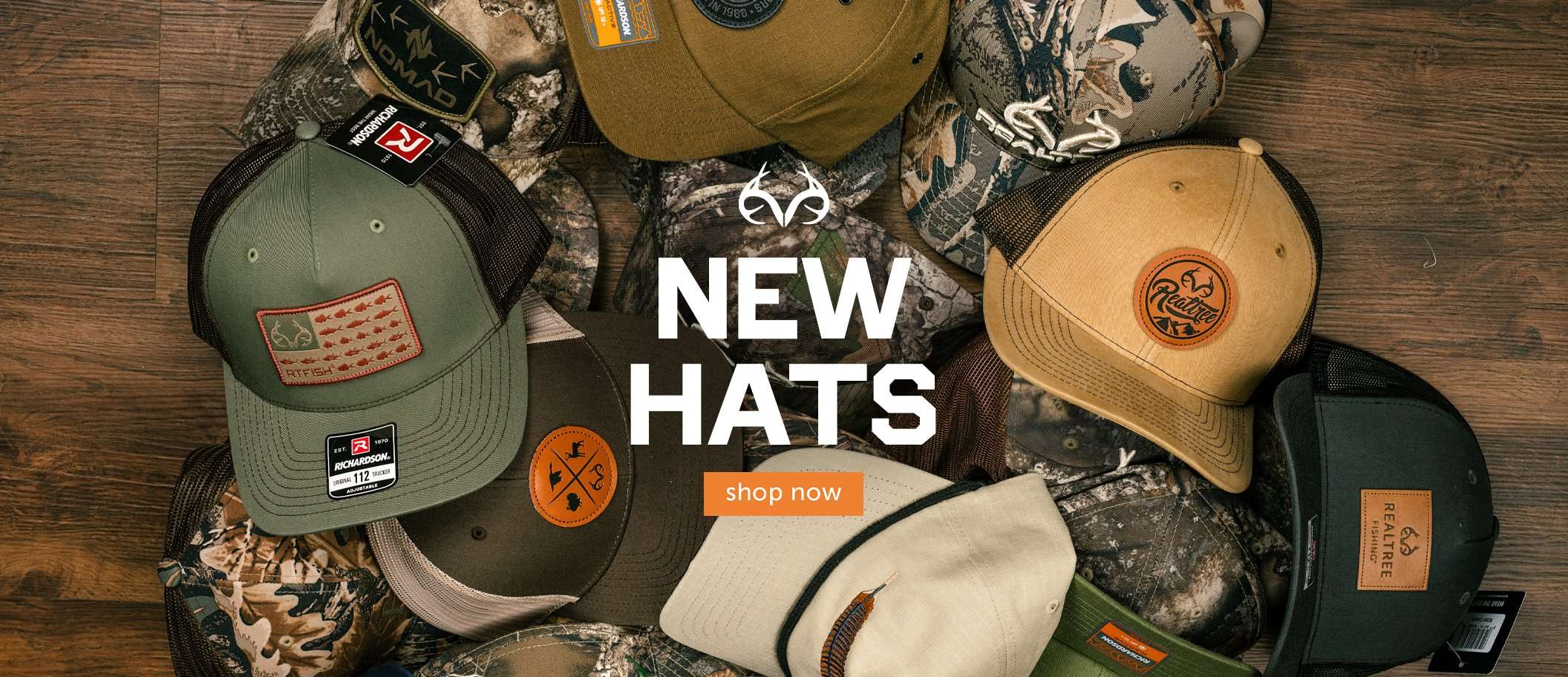All it takes is a handful of worms or tube of crickets, right? Not so fast. You've got to find a bed first, and big bluegills can be picky
For many of us, fishing began with catching bream. They were bluegills if you lived up North, and maybe sunnies or stump-knockers in other places. They were fish that came with guarantees. A bait can and cane pole, and we were on.
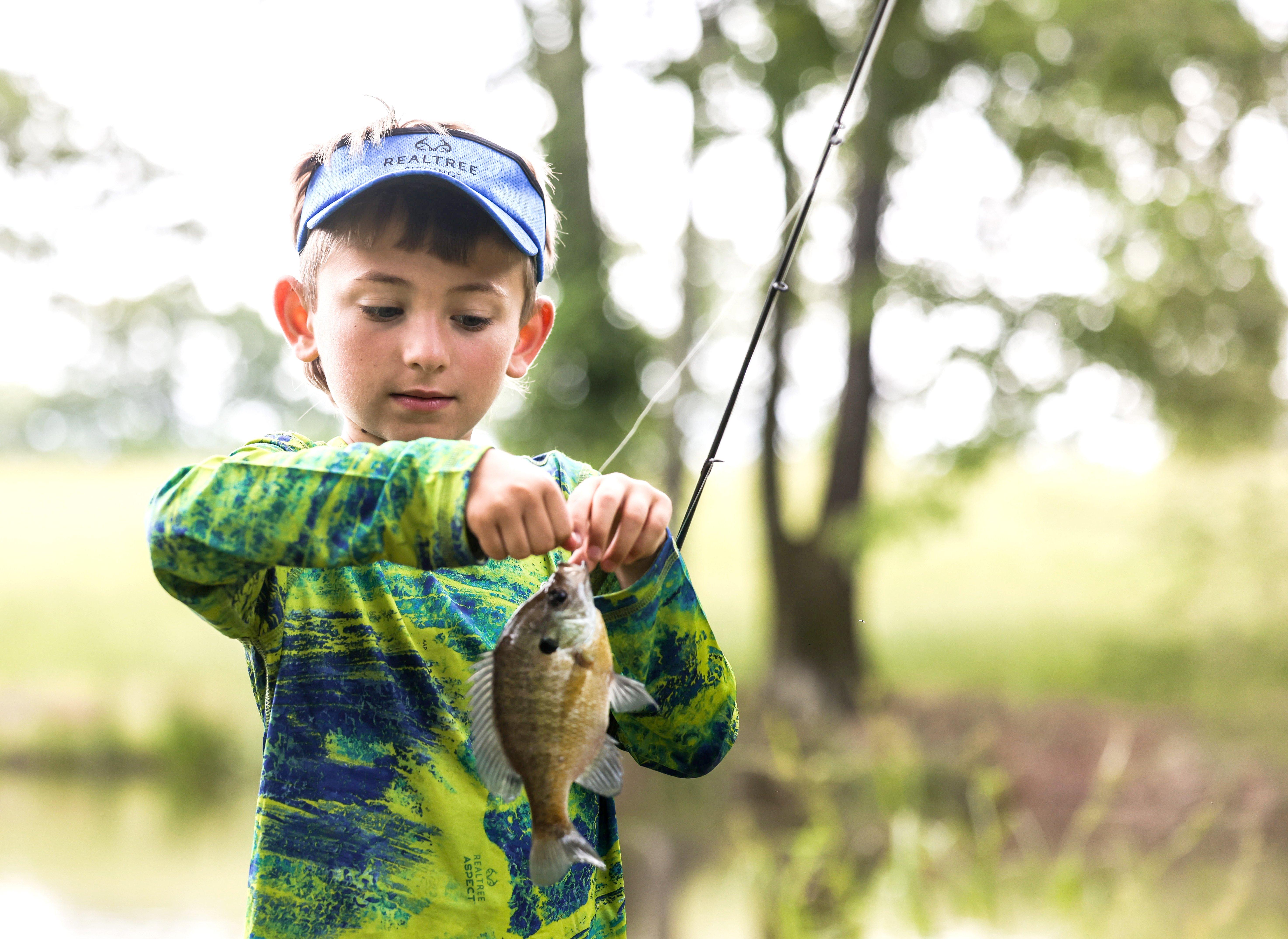
Bream and other panfish make the perfect target species for beginners of all ages. Image by Realtree Media
As time goes by and angling adventures become more complex, many folks turn away from bream fishing, but then come back to it later in life. That guarantee gets mighty attractive when the bass aren’t biting. And bream of all kinds make excellent table fare.
Springtime brings with it an opportunity to mingle with sunfishes of all types. Bass are sunfish, as are crappies, but for many, the word “sunfish” brings various bream species to mind including bluegills as well as shellcrackers, long ear sunfish, and in my neck of the woods, redbreast sunfish, which definitely win the beauty pageant.
SPAWNING AREAS
April and May, when water temps enter the 70s, are prime months for bream fishing. Spawning later in the season than crappies, and usually on the tail end of the bass spawn, bream are shallow this time of year, making them accessible to anglers.
Like all of the sunfishes, bream spawn by building and defending nests. Before, during and after the spawn, they feed heavily. They’ll gather in colonies in areas with suitable bottom composition and shape out saucer-like beds that can often be seen with the naked eye, and definitely through side-scanning sonar.
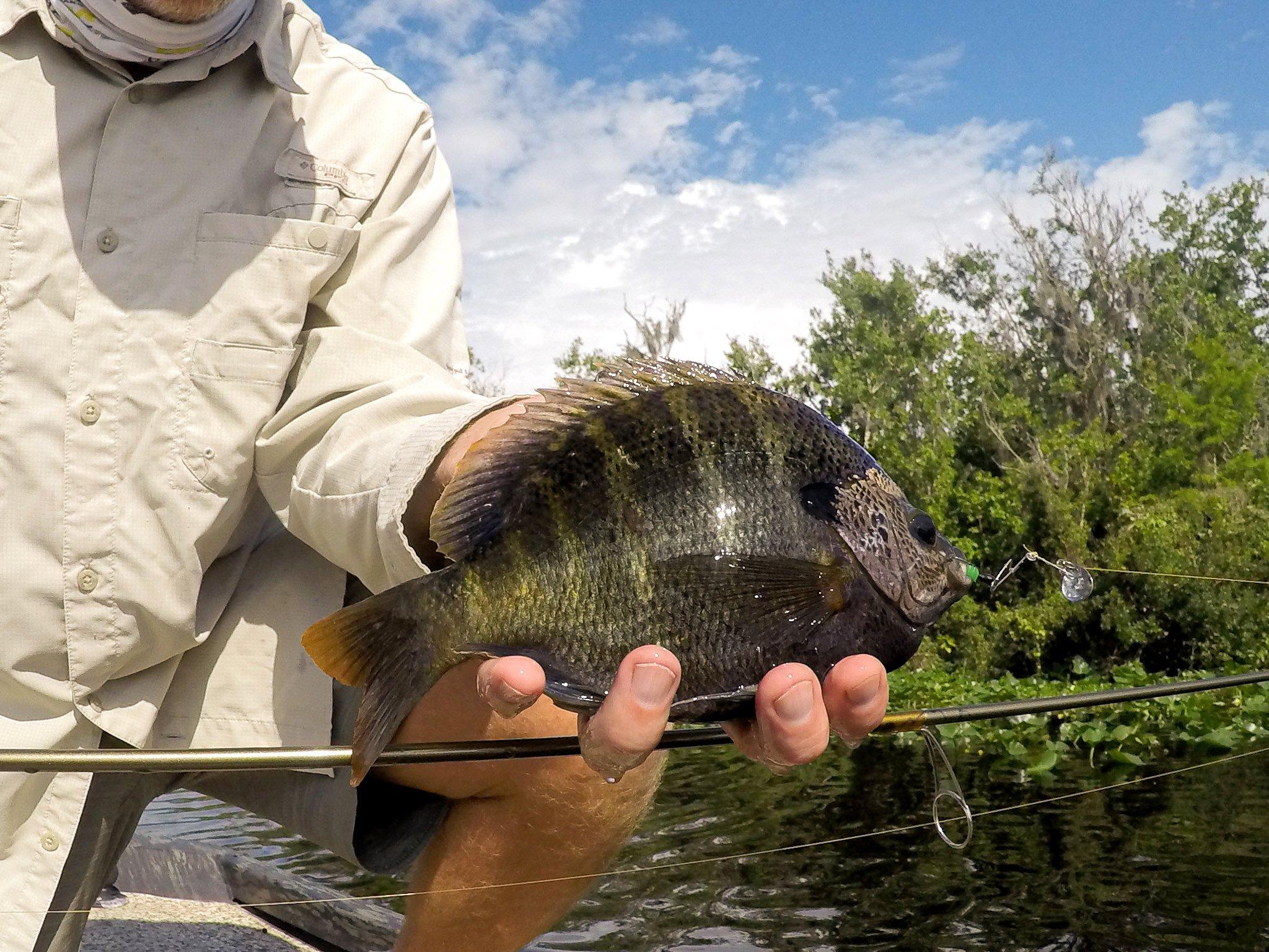
Spring is the prime time to search out the saucer like beds that hold loads of hungry fish. Image by Millennium Promotions.
To find the shallow gathering areas, it’s important to identify spots with a firm bottom. Sandy shoreline areas a no-brainer, and they attract the most fish when weeds or brush cover is nearby. In rivers and creeks, look for areas where current washes away the silt. This is often the head or tail end of islands, or where a deep channel first intersects a shoreline. If you know a few good “hard spots” to catch summer bass, you’re probably in the right area.
Boat docks are spawning meccas in many reservoirs, as are the shallow flats around docks. Again, these will be noticeable with a little investigation. Look for beds, and fish circling the area. I’ve seen big bream spawning under floating mats of vegetation, a surprise to many. But that material doesn’t block as much light as we think (most plants let a lot of sunshine through), and it results in a safe, cozy habitat for a bream colony.
In areas with a soft bottom, bream will sometimes spawn on top of objects. Cypress knees frequently host bream beds, as do shallow stumps. Boat ramps are famous bream haunts, be they concrete or gravel. Same for bridge abutments.
ARTIFICIAL PRESENTATIONS
Once you’ve picked an area out where you’re certain bream are present, catching them is as easy as tossing in a worm and reeling them in, right? Not always. Sure, sometimes small sunfish will readily bite. But that’s less often than we may think. Bream, especially large fish consumed with spawning duties, are frequently quite picky. What’s more, for a bait to be effective, it often needs to be in exactly the right spot.
It’s also important to consider the natural diet of the fish you’re pursuing. In the case of bluegills, a bulk of their food comes in the form of insects and small invertebrates. As a result, these aren’t the fish that usually chase down small crankbaits and swimbaits, like big crappies. But they will clobber a Beetle Spin, or a small, inline spinner. Always keep both rigged to use as a search bait.
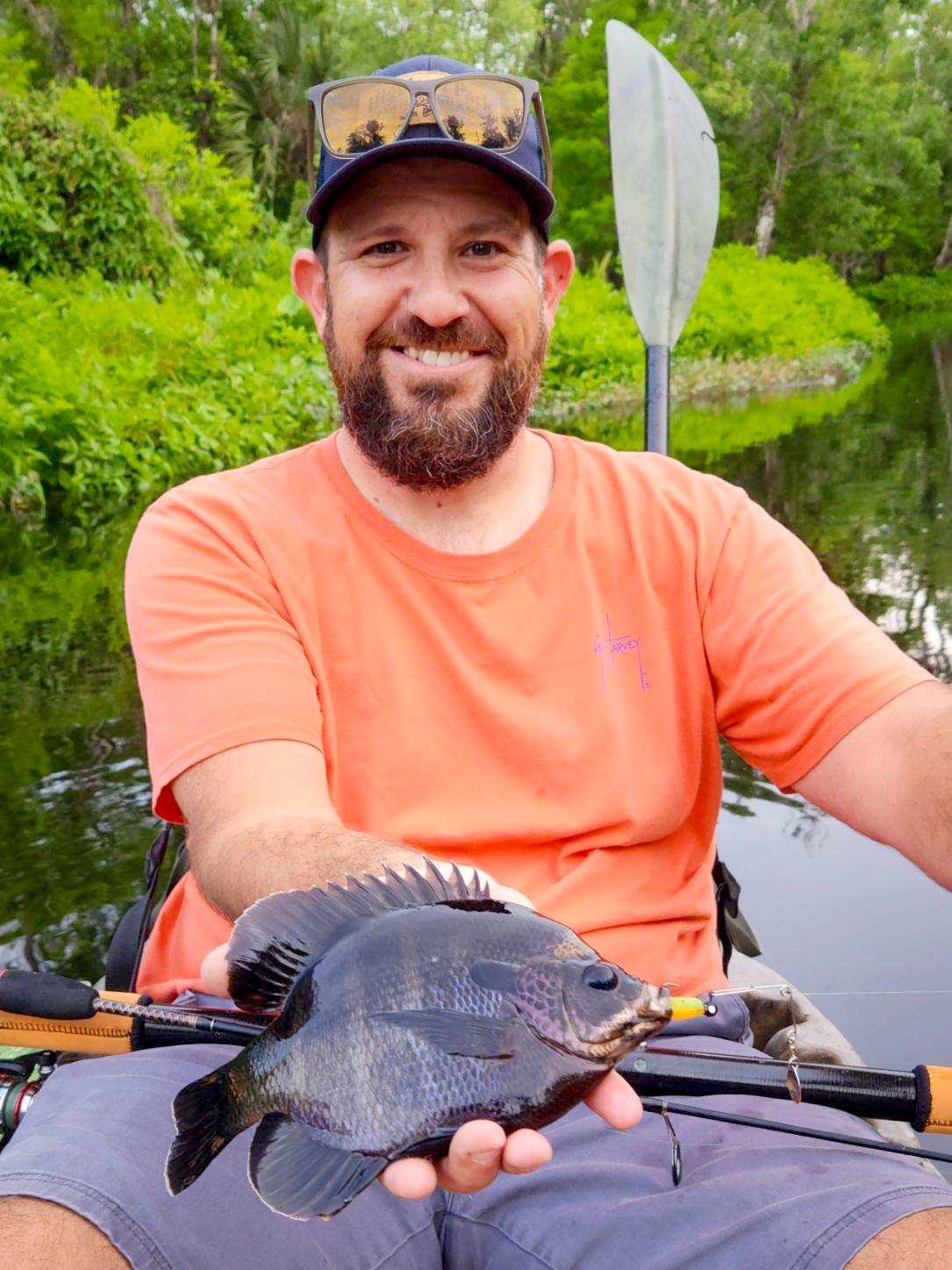
Artificial baits like jigs or small spinners can be deadly on large sunfish. Image by Daniel Bass
Bluegills especially like “buggy” offerings in terms of artificial baits. Tubes seem to always work, especially 2-inch versions suspended under a cork. Many soft-plastic manufacturers also produce small nymphs and bugs, which can score big. A lightweight, black feather jig has always been a favorite of mine when nothing else works. You’ll find what best suits your fishery, but, in the case of bluegills, remember to suspend the bait above bottom and work it only with light shakes and twitches.
***Don’t Miss: *SIMPLE JIG AND BOBBER FISHING FOR BIG SPRING CRAPPIE
CRICKETS AND WORMS
Live bait, of course, can work wonders. While traditional redworms and nightcrawlers get the most play, crickets are better. If you can get accustomed to having these creepy crawlies on board with you, they’ll catch you more bream than anything when rigged on a long-shanked, light wire hook. Grasshoppers are right on par.
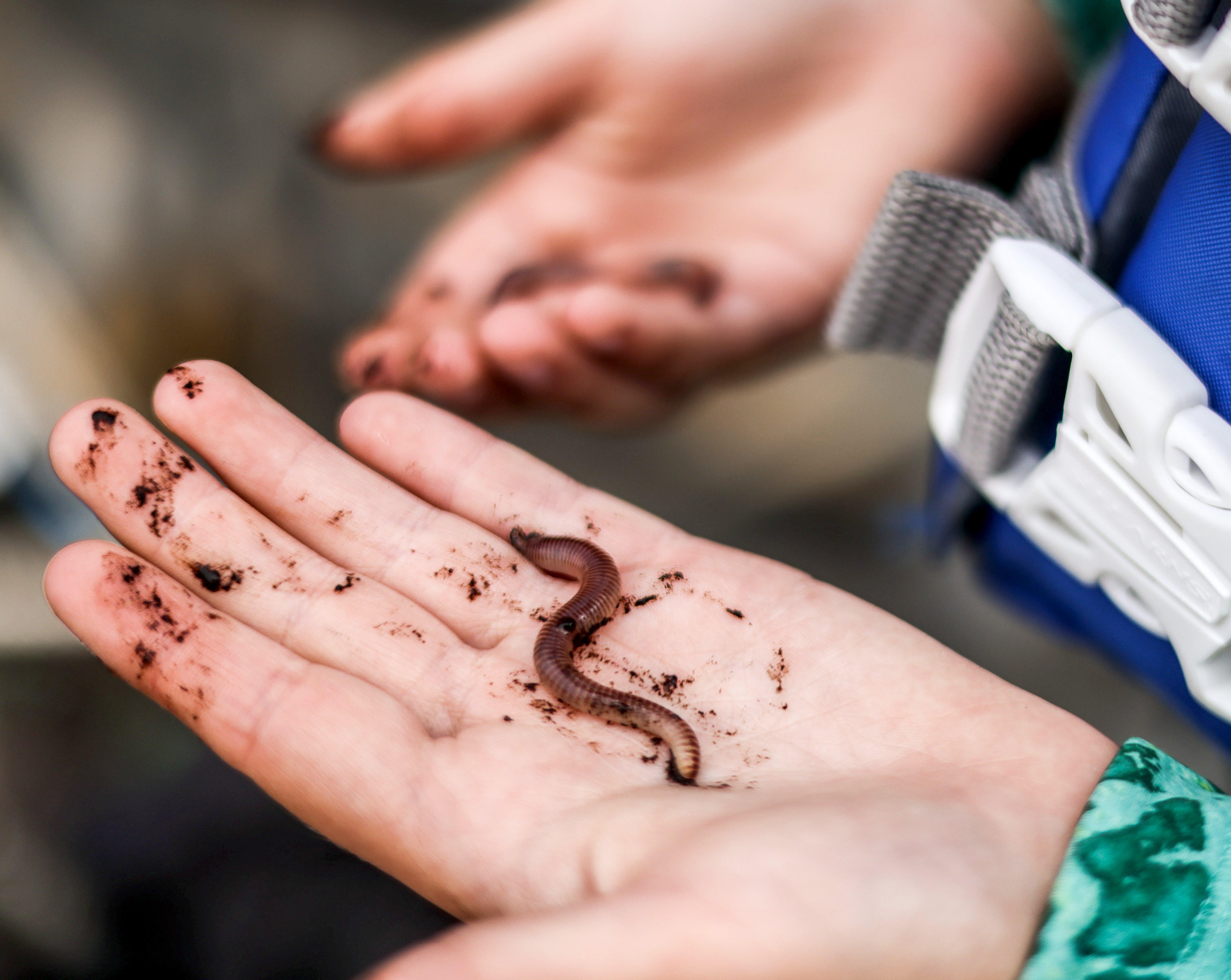
Live bait like worms and crickets rigged on a long-shanked, light wire hook will fill a stringer or live well with eating size panfish. Image by Realtree Media
A number of bream species feed on crustaceans and snails. These include the pumpkinseed (found primary in the Great Lakes region), and, most famously, the shellcracker. Shellcrackers, in fact, have special teeth in their throat to crack snail shells, and can even open up clams and mussels.
These species frequently respond best to baits dragged across the bottom. Again, tubes often work well, as do worms or small crayfish. In Florida, some savvy local anglers use small shrimp for shellcrackers with impressive results. Most often, pumpkinseeds and ‘crackers will be found out away from the shoreline, as both prefer slightly deeper and cooler water than bluegills. Here, it’s important to find the exact spot. Weedlines transitioning to sandy areas are tops in the North. Down South, points with a little gravel are killer spots.
***Don’t Miss: *WALMART OFFERING LIVE BAIT PICKUP AND DELIVERY SERVICES ACROSS THE U.S.
Much of what there is to know about the diet of your local bream species can be determined by their mouths. Redbreast sunfish, with small mouths like a bluegill, feed primarily on insects and tiny minnows. A rock bass of the same size, however, can take down a shiner with its bass-like maw. Choose baits accordingly.
A large portion of our spring bream fishing targets spawning fish. With today’s skill sets, advanced electronics and often liberal catch limits, it’s entirely possible to fish out an area. Only keep enough fish for a meal or two, and resist fishing the same beds day after day. Years down the road, you’ll be glad you did.
Spring is a magical time of year for anglers. And nothing gets us back to our fishing roots faster or better than a few hours spent fishing a good bream bed.


